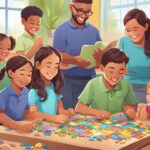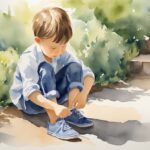Ever caught your little one turning a cardboard box into a spaceship? That’s creativity in action! Tapping into your child’s imagination is key to helping them think outside the box (literally and figuratively). It builds confidence and encourages them to come up with original ideas.
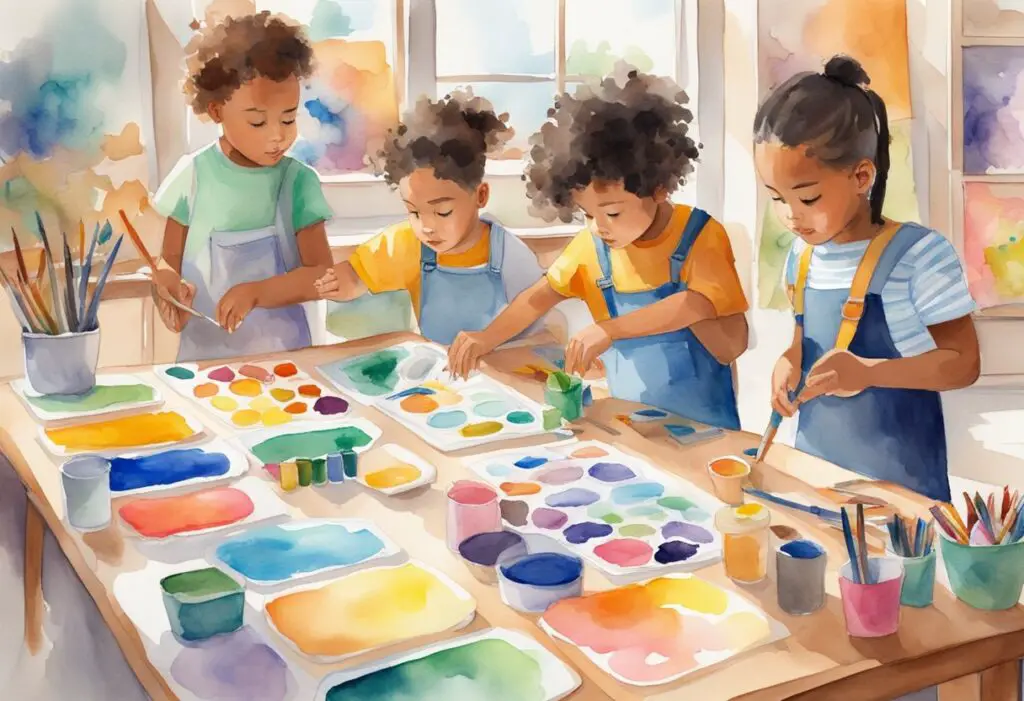
You’re probably wondering how to keep that creative spark alive without turning your house into a tornado of glitter and glue. Simple activities like telling imaginative stories and having times for making messes can get the wheels turning. Pens and markers for drawing, glue guns for crafty projects—all these tools let your child explore different ways of making.
Remember, fostering creativity isn’t about enrolling in the fanciest art class or buying the latest expensive toy. It’s about providing opportunities and tools for your child to explore their imagination in a fun, meaningful way. So, break out the duct tape and let the creative chaos begin!
The Art of Making Messy Mistakes
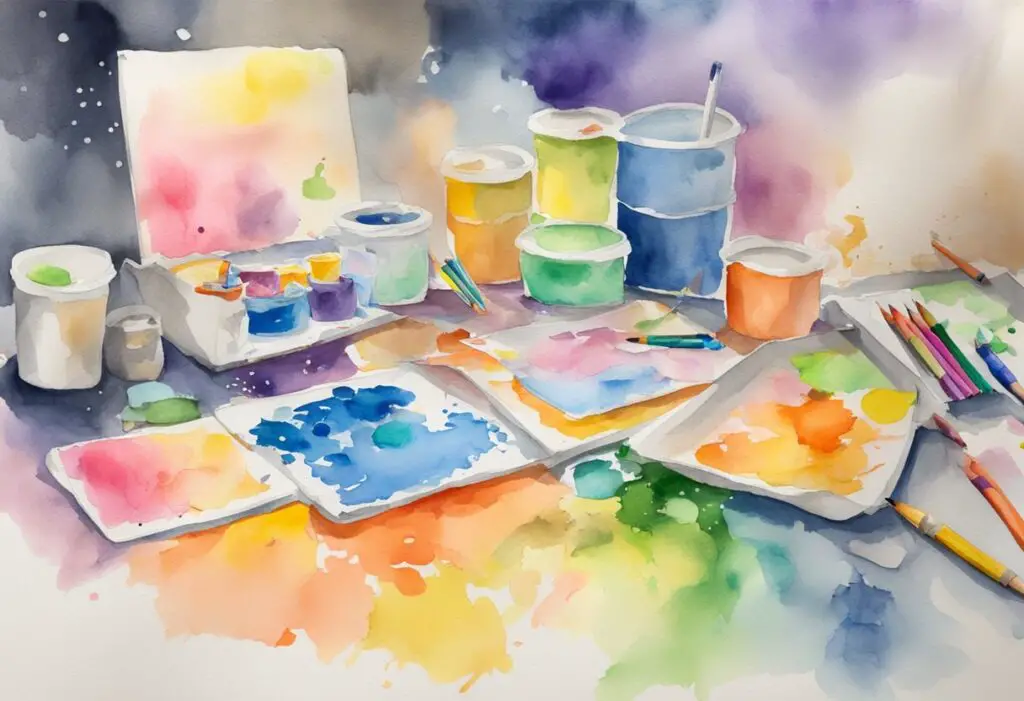
Encouraging children to embrace messy mistakes can lead to newfound creativity and learning. This involves seeing value in artistic accidents and understanding how unstructured noise can become beautiful music.
Celebrating Oopsy-Daisies in Art
Everyone loves a good oopsy-daisy moment in art! When your child’s drawing or painting goes off the planned path, it’s not a failure—it’s an opportunity.
Imagine your child’s crayon doodle morphs into an accidental masterpiece. Those splashes of color that didn’t stay within the lines? They’re bursts of originality. By celebrating these happy accidents, you teach children that creativity often flourishes when things don’t go as planned.
-

Bold Male Pride – Baseball Trucker Cap Celebrating Masculinity
£18.00 Select options This product has multiple variants. The options may be chosen on the product page -

Dad Bod Appreciation Gift Mug
£14.00 Add to cart -

Dad Bod, Bad Jokes Structured Baseball Cap
£22.00 Select options This product has multiple variants. The options may be chosen on the product page
A spilled paint jar might seem catastrophic, but sometimes those splotches create fascinating textures. Encourage kids to explore these mistakes. Is that blob a tree now? Or maybe an elephant? The key is to see potential in every error. After all, many great artists turned mistakes into iconic pieces.
Musical Mayhem: From Noise to Notes
Grab your earplugs because musical creativity can start with a lot of noise! When children create music, it often begins with chaotic clanging. But out of this mess comes rhythm and melody.
Musical mistakes can be goldmines. If your kid’s attempt at playing the piano sounds more like an avant-garde composition, it’s a chance to find patterns in the chaos. Encourage them to bang those drums or strum the guitar haphazardly. They might just stumble upon a catchy tune or unique beat.
Turning noise into notes involves experimentation. Let children mix different sounds, even if they seem discordant at first. By allowing them to explore without fear of “wrong” notes, you nurture their musical originality. And who knows? Your home might produce the next big hit.
Brain Gymnastics: Flexing the Imagination Muscle
Exploring puzzles and hands-on activities can significantly boost your child’s creative and cognitive abilities. These activities encourage critical thinking, problem-solving, and the application of scientific principles in a fun manner.
Puzzles and Problems: The More, The Merrier
Engaging your child with puzzles is like handing them a brain gym membership. Every jigsaw piece they connect, every riddle they solve, and every Sudoku they crack pumps up their mental muscles.
Such exercises enhance their problem-solving skills and logical thinking.
Consider different types of puzzles like crosswords, jigsaw puzzles, and brain teasers. Each format offers unique challenges, keeping the brain agile and receptive to new knowledge.
If you’re feeling scientific, math-based puzzles and logic problems can be a hit too. Problems like these are mini-labs for the brain, fostering an innovative mindset.
Puzzles may appear simple, but they often introduce your child to the basics of critical thinking and patience. So, next time you see your child link that last puzzle piece, remember—they’re not just playing; they’re giving their brain a solid workout.
Building Brains with Blocks and Bric-a-Brac
When was the last time you stepped on a LEGO piece? Painful, yes, but those little bricks are mighty brain-builders. Building blocks, be it LEGO, Lincoln Logs, or a random pile of bric-a-brac, are more than mere toys. They’re tools for innovation.
Creating structures from various materials hones spatial awareness and fine motor skills. This hands-on approach is vital for understanding how things fit and work together.
Your child learns rudimentary principles of engineering and science while stacking blocks or bric-a-brac.
This trial-and-error process is crucial for growth. They discover what works, what doesn’t, and how to fix it. Plus, it’s a sneaky way to introduce concepts of balance, gravity, and design.
So hand your child a box of blocks and watch as they build not just towers, but a strong foundation for critical thinking and problem-solving skills.
The Social Scene: Playdates with Purpose
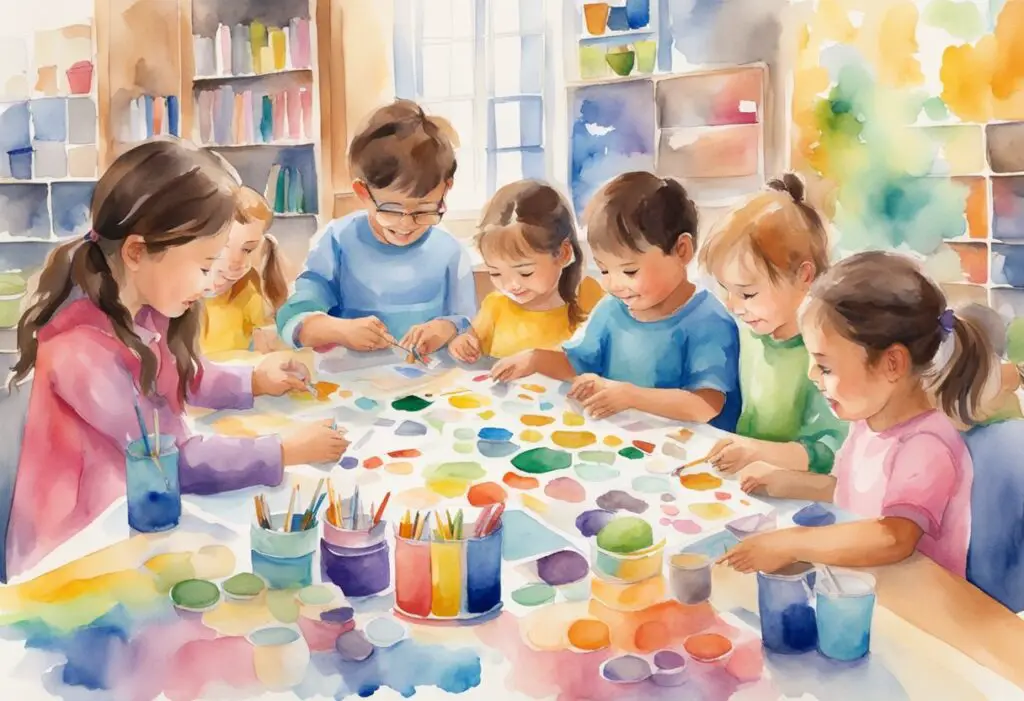
Playdates are a fantastic way for children to build social skills while having fun. By focusing on empathy and cooperation, you can turn these gatherings into valuable learning experiences.
Empathy Express: All Aboard the Collaboration Station
Imagine a world where children understand each other’s feelings and work together like a dream team. That world starts with playdates. Encourage games and activities that require collaboration and empathy. Think of building a town with blocks or creating a group art project.
Parents and educators can boost this experience by teaching children phrases like “How can I help you?” or “What do you need?”. This not only enhances social skills but also sets the stage for lifelong teamwork.
Use role-playing scenarios to help kids step into each other’s shoes. For example, one child can pretend to be a chef while the other is the customer. This helps children understand different perspectives and fosters a sense of cooperation.
Friendship Factory: Cooperation Crafts
Now, let’s talk crafts. Craft activities are more than just fun; they’re a golden ticket to the Friendship Factory. Choose activities that require kids to work together towards a common goal.
How about making a giant friendship bracelet or a cooperative painting? Each child can contribute, and the end product is a symbol of their united effort. It’s like your very own Friendship Factory where cooperation is the key ingredient.
Parents, you might want to guide these activities subtly. Your presence ensures the children stick to the task and learn the valuable skill of working as a team. It’s more than just glue and paper; it’s a big, messy lesson in unity and collaboration!
Unleashing Creative Chaos: The Wonders of Play
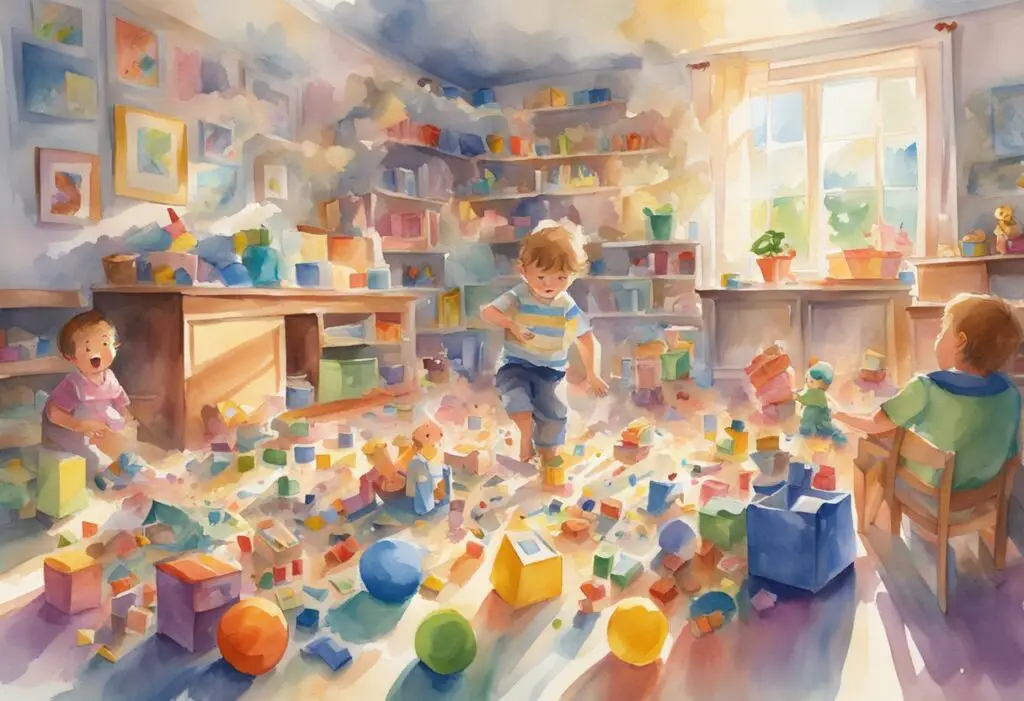
Inspiring creativity in children often takes the form of unstructured play, allowing their curiosity to bloom and their imagination to run wild. Let’s jump into some playful antics that make this possible.
Masters of Disguise: Role-Playing Revelry
Watch out! Your living room just transformed into the most fantastical stage imaginable. Role-playing isn’t just for Halloween; it’s a year-round ticket to pure imaginative play. When kids slap on that blanket cape, they’re not just playing—they’re exploring new worlds, dabbling in problem-solving, and flexing social muscles.
Think about how many risks they take when they decide to become pirates, astronauts, or even superheroes needing to save the universe from certain doom. By stepping into these diverse roles, kids break boundaries, fuel their curiosity, and discover surprising things about themselves and their friends.
Toyland Trials: Gadgets and Gizmos Aplenty
Forget the video games—what happens when kids get their hands on building blocks, puzzles, or open-ended apps? Magic. These tools turn any rainy afternoon into a bustling workshop of ideas. There’s nothing quite like the satisfaction of building a tower and then delighting in watching it tumble.
Taking apart and piecing together gadgets can spark curiosity and engagement, honing problem-solving skills and patience. Exploration through these materials teaches them the fundamentals of engineering and architecture without them even realizing it. Who knows? Today’s Lego architect could be tomorrow’s skyscraper designer.
So bring out the toys, folks! The more, the merrier; chaos is where creativity thrives, after all.
The Science of Encouraging ‘Eureka!’ Moments
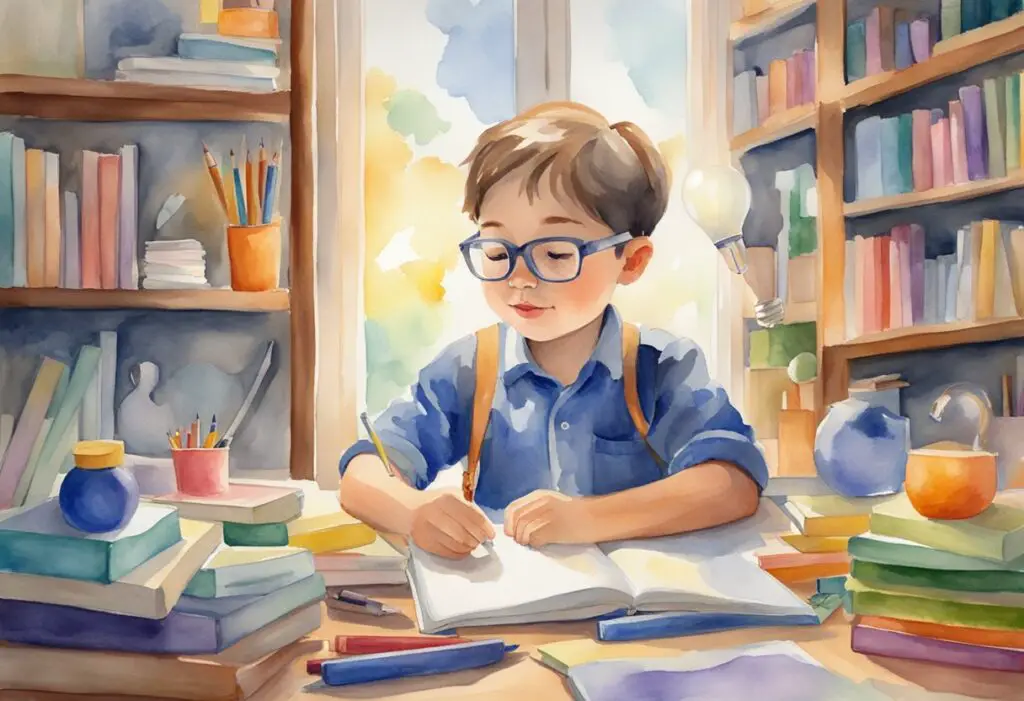
Inspire the budding creativity of children by leveraging scientific methods to foster those magical “Eureka!” moments. Encourage playful experimentation and imaginative problem-solving that can lead to innovative discoveries.
Potion Mixing 101: Bubble, Bubble, Toil, and… Creativity?
Imagine a young wizard in a lab coat, mixting colorful potions and waiting for something magical to happen. Encouraging this type of exploratory play is key to sparking creativity. Let children mix different household items—think baking soda and vinegar—to observe fascinating reactions.
This simple yet effective activity nurtures scientific curiosity and invites discussion about chemical reactions. Educators can create a “Potion Lab” area with safe, non-toxic ingredients where kids can play, experiment, and document their observations. Kids love the instant feedback, and this helps them stay engaged and eager to explore more.
Little Inventors: From Crazy Ideas to Genius Gadgets
Equip young minds with tools like a 3-D printer, LEGO sets, and craft supplies. Create an environment where crazy ideas can flourish into functional gadgets. Encourage kids to draw their wildest inventions and then try to build them.
Science backs this approach—constructing physical models can help solidify abstract concepts and enhance problem-solving skills. Nudging children to fix minor daily annoyances, like a tangled shoelace, can turn their playful ingenuity into real-world solutions. This type of nurturing cultivates little inventors ready to tackle tomorrow’s big challenges.
(pxNurturing, educators, science, 3-d printer, innovation, exploratory)

